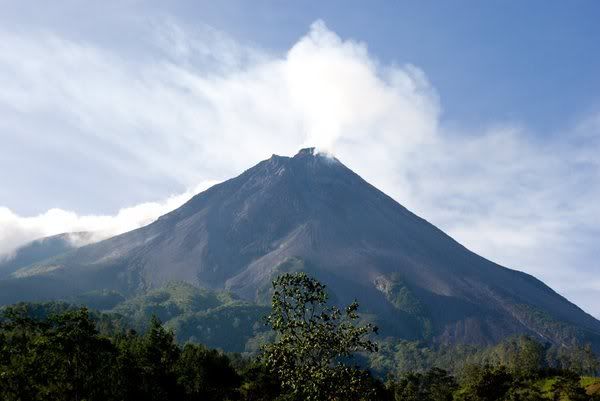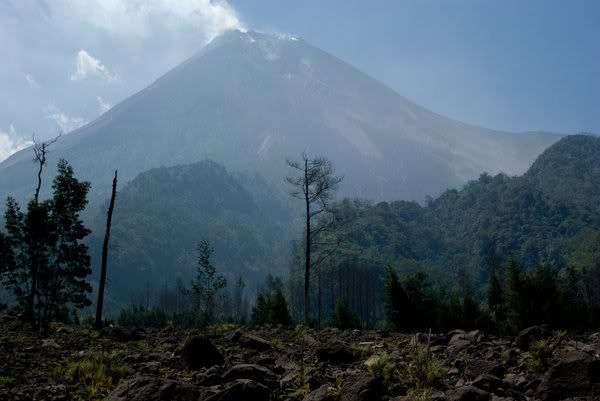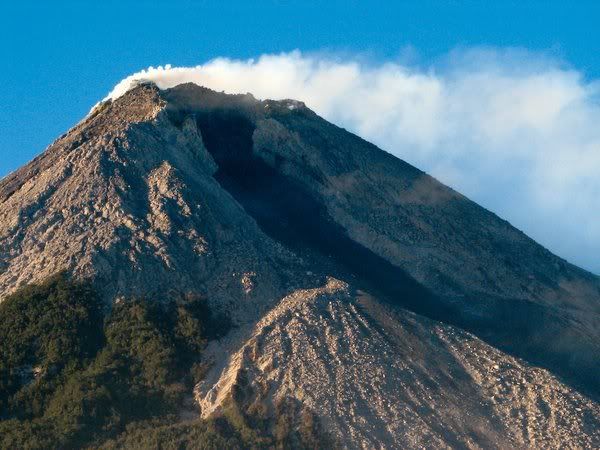Ratu Boko Temple
So far, tourists visiting the province of Yogyakarta is more familiar with the Prambanan Temple as one tourist attraction worth visiting. In fact, about three miles south of Prambanan temple, there are buildings other relics of Old Mataram Kingdom, the temple complex of Ratu Boko. Ratu Boko Temple was built during the reign of Rakai Panangkaran, one of the descendants of Wangsa dynasty.
Ratu Boko Temple Complex was first discovered in 1790 by van Boeckhlotz. Nevertheless, only a hundred years later, serious research on this temple was performed and published in the book van Ratoe Kraton Boko. According to the opinion of experts of history, this temple has a multi-function, namely as a fortress palace, places of worship, and caves.
The entire temple area is located approximately 196 m above sea level is 250,000 m2, which is divided into four parts, the central, west, southeast, and east. The center of this temple consists of building the main gate, the field, burning temples, ponds, stone berumpak, and paseban. The southeast includes the marquee, halls, three temples, ponds, and complex for princess. In this section there is also a well named Amrita Mantana which means holy water. It is said that water in wells has a property that can bring good luck to the wearer. In the east there is a cave complex, Buddhist stupas, and pool. While in the west there are hills that are very attractive to be the location of rest after this weary around the temple area.
Ratu Boko Temple has a privilege not shared by other temples in Yogyakarta and Central Java, which is generally made only to places of worship. Heritage Ratu Boko temple on the site show that the building has a profane nature as indicated by the presence of princess and paseban.
In addition, in the building of this temple can be seen the combination of the elements of Hinduism and Buddhism. This is evident from the existence of Linga and Yoni statues, Ganesha statues, and gold plate that reads swaha namah Om Rudra yes. Slabs implies a form of worship of the god Rudra, another name of Lord Shiva. This fact illustrates that the Rakai Panangkaran, the initiator of the temple, a Buddhist to appreciate the citizens who embraced Hinduism.
From one of the parts in this temple, precisely at the Plaza Andrawina, if facing to the north, visitors will see the beautiful sights of the city of Yogyakarta and Prambanan Temple, the Mount Merapi volcano as background. If visitors are in the location of this temple until sunset, the feel around the temple will be more beautiful with the presence of an orange tinge in the evening.
Ratu Boko Temple area is located about 17 km east of Yogyakarta. Precisely in Bokoharjo District, Sleman District, Yogyakarta Province, Indonesia. Tourists who visit Ratu Boko Temple area, can use the Trans Jogja Bus routes 1A and 1B to reach the Terminal Prambanan at a cost of Rp 3000.00 per person. From the terminal, travelers can continue the journey by using the motorcycle taxi to the Temple of Queen Boko. If you want an easier trip, travelers can rent a car at a price of about Rp 200,000.00 Rp 350,000.00 per-day (2009).
To visit this tourist area, visitors are charged Rp 10.000,00 per person. In addition, if visitors bring a private car, parking will be charged at Rp 5000.00. In the meantime, if you want to enjoy the panoramic sunsets in Boko Temple, visitors will be charged a fee of Rp 35,000.00.
At the Plaza Andrawina, in addition to enjoying the beautiful scenery, this place also serves as a restaurant. In this place, visitors who have finished exploring every corner of the area of Boko Temple, to rest at the same time fill a hungry stomach. Besides restaurants, the location of this temple has also been equipped with a toilet and small mosques.
Ratu Boko Temple Complex was first discovered in 1790 by van Boeckhlotz. Nevertheless, only a hundred years later, serious research on this temple was performed and published in the book van Ratoe Kraton Boko. According to the opinion of experts of history, this temple has a multi-function, namely as a fortress palace, places of worship, and caves.
The entire temple area is located approximately 196 m above sea level is 250,000 m2, which is divided into four parts, the central, west, southeast, and east. The center of this temple consists of building the main gate, the field, burning temples, ponds, stone berumpak, and paseban. The southeast includes the marquee, halls, three temples, ponds, and complex for princess. In this section there is also a well named Amrita Mantana which means holy water. It is said that water in wells has a property that can bring good luck to the wearer. In the east there is a cave complex, Buddhist stupas, and pool. While in the west there are hills that are very attractive to be the location of rest after this weary around the temple area.
Ratu Boko Temple has a privilege not shared by other temples in Yogyakarta and Central Java, which is generally made only to places of worship. Heritage Ratu Boko temple on the site show that the building has a profane nature as indicated by the presence of princess and paseban.
In addition, in the building of this temple can be seen the combination of the elements of Hinduism and Buddhism. This is evident from the existence of Linga and Yoni statues, Ganesha statues, and gold plate that reads swaha namah Om Rudra yes. Slabs implies a form of worship of the god Rudra, another name of Lord Shiva. This fact illustrates that the Rakai Panangkaran, the initiator of the temple, a Buddhist to appreciate the citizens who embraced Hinduism.
From one of the parts in this temple, precisely at the Plaza Andrawina, if facing to the north, visitors will see the beautiful sights of the city of Yogyakarta and Prambanan Temple, the Mount Merapi volcano as background. If visitors are in the location of this temple until sunset, the feel around the temple will be more beautiful with the presence of an orange tinge in the evening.
Ratu Boko Temple area is located about 17 km east of Yogyakarta. Precisely in Bokoharjo District, Sleman District, Yogyakarta Province, Indonesia. Tourists who visit Ratu Boko Temple area, can use the Trans Jogja Bus routes 1A and 1B to reach the Terminal Prambanan at a cost of Rp 3000.00 per person. From the terminal, travelers can continue the journey by using the motorcycle taxi to the Temple of Queen Boko. If you want an easier trip, travelers can rent a car at a price of about Rp 200,000.00 Rp 350,000.00 per-day (2009).
To visit this tourist area, visitors are charged Rp 10.000,00 per person. In addition, if visitors bring a private car, parking will be charged at Rp 5000.00. In the meantime, if you want to enjoy the panoramic sunsets in Boko Temple, visitors will be charged a fee of Rp 35,000.00.
At the Plaza Andrawina, in addition to enjoying the beautiful scenery, this place also serves as a restaurant. In this place, visitors who have finished exploring every corner of the area of Boko Temple, to rest at the same time fill a hungry stomach. Besides restaurants, the location of this temple has also been equipped with a toilet and small mosques.











 Read more: http://epg-studio.blogspot.com/2009/06/widget-pengatur-halaman-untuk-kembali.html#ixzz1UA3ocoWT
Read more: http://epg-studio.blogspot.com/2009/06/widget-pengatur-halaman-untuk-kembali.html#ixzz1UA3ocoWT